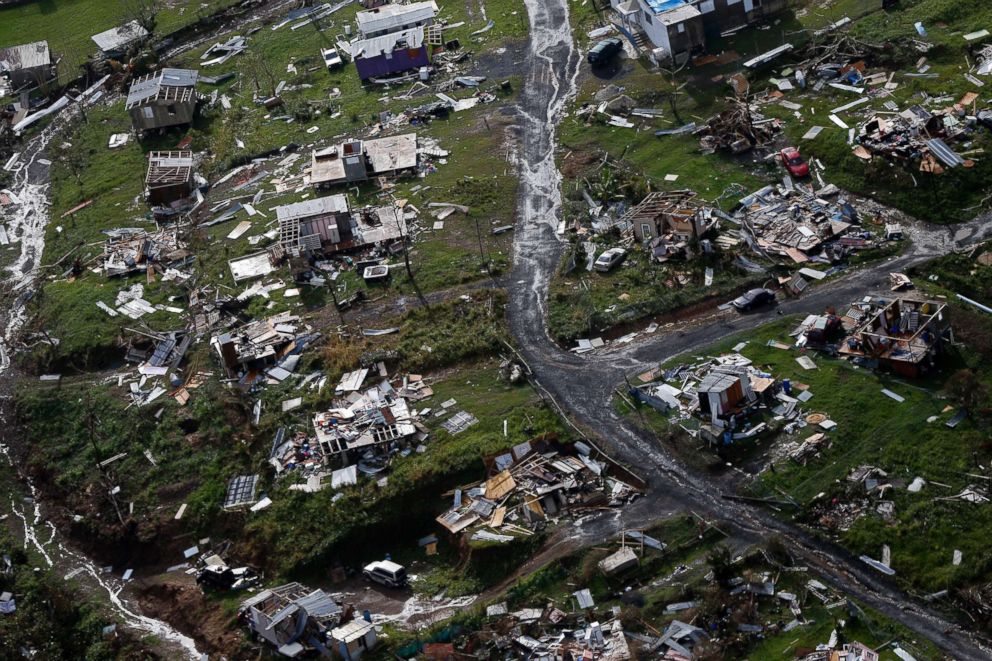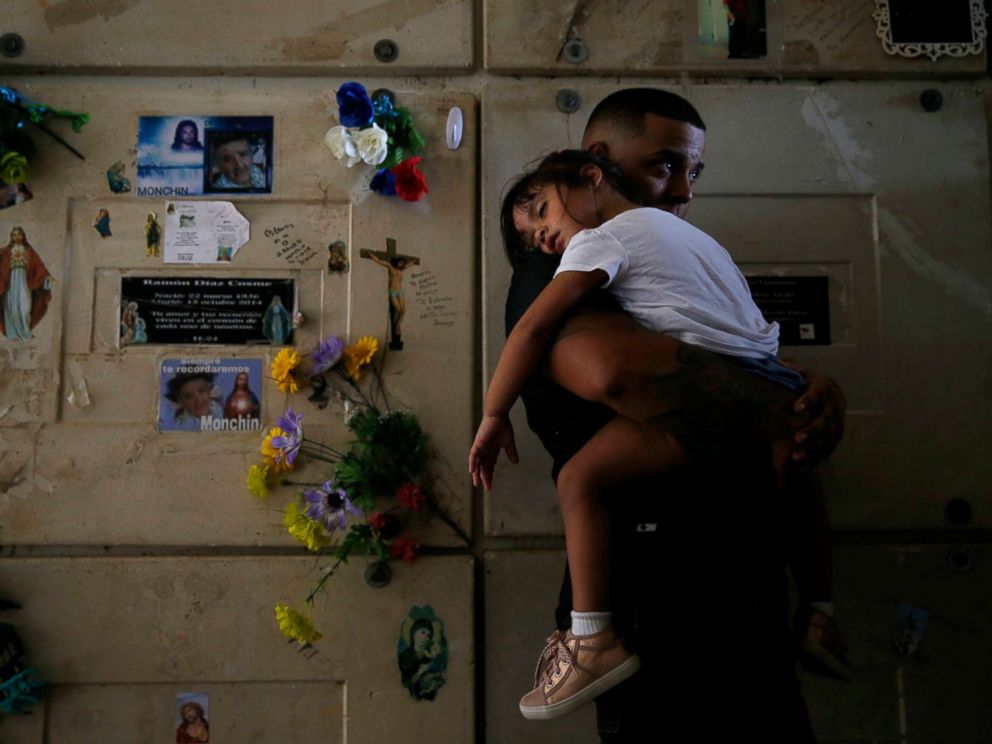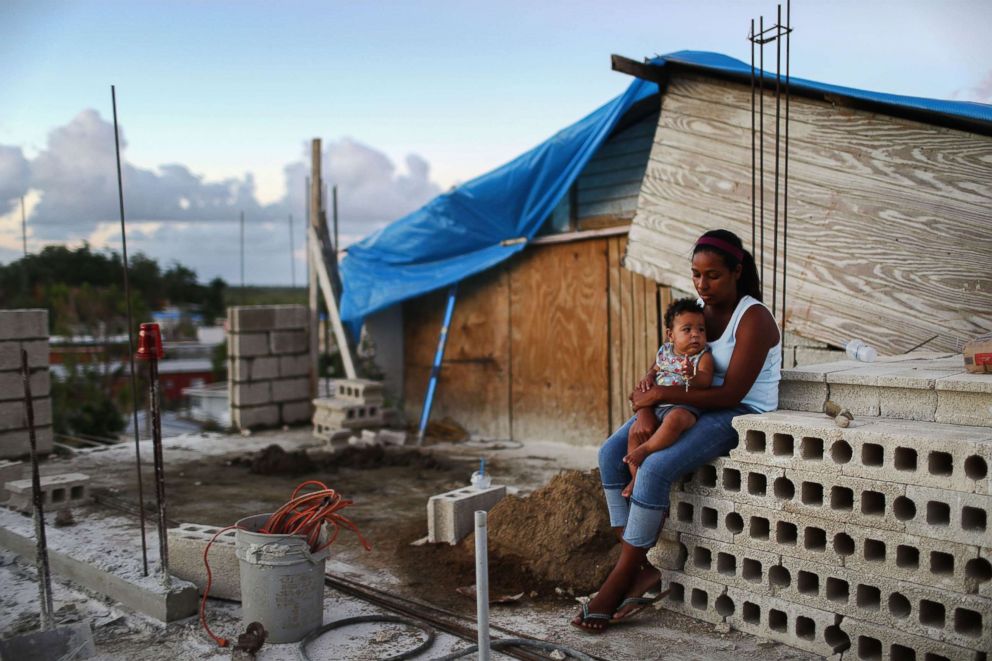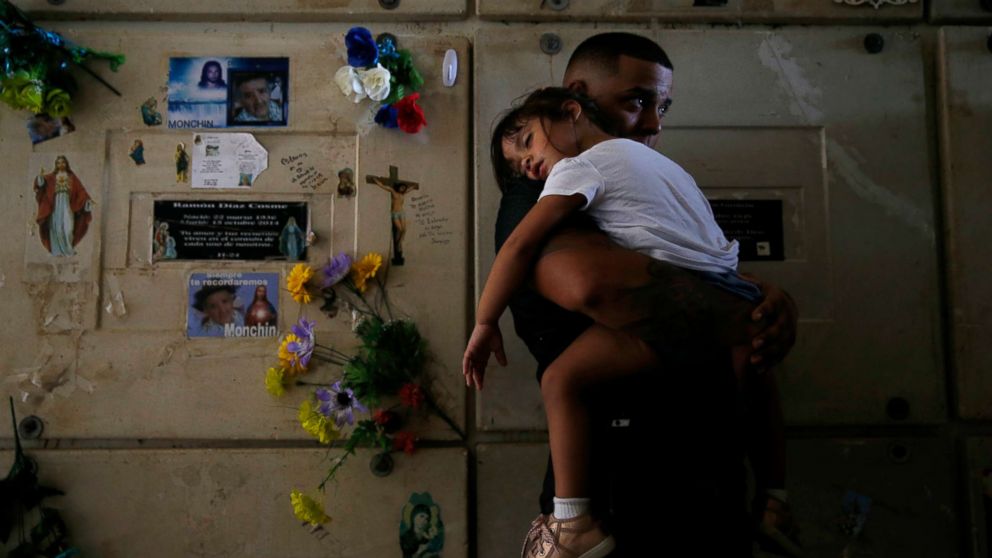[ad_1]
Puerto Rico had a significant increase in deaths following Hurricane Maria in 2017, according to a new study.
Interested in Hurricanes?
Add Hurricanes as an interest to stay up to date on the latest Hurricanes news, video, and analysis from ABC News.
Researchers determined that an estimated 2,975 people died in the five months following Hurricane Maria. The independent study, from George Washington University’s Milken School of Public Health, was commissioned by the Puerto Rican government.
 Alvin Baez/Reuters, FILE
Alvin Baez/Reuters, FILEThe official government death toll currently stands at 64, according to the Puerto Rico Department of Public Safety.
In the aftermath of Maria, deaths did not discriminate by social level or age group, the report found. Yet the risk of death was 45 percent higher for people living in low socioeconomic development towns and for men 65 years or older, the report showed.
 Gerald Herbert/AP, FILE
Gerald Herbert/AP, FILEThere were an estimated 1,271 additional deaths in September 2017 and October of 2017, and 2,098 additional deaths from September 2017 to December 2017 compared to the previous year, according to the report. The largest difference in deaths was in the northeastern part of the island, along Maria’s path.
The finding comes after nearly a year of questions, uncertainty and political sparring over the human toll of the storm.
President Donald Trump visited the island in the days following the storm.
“If you look at a real catastrophe like Katrina, and you look at the tremendous hundreds and hundreds and hundreds of people that died … 16 people versus in the thousands. You can be very proud of all of your people,” he said.
 Boston Globe via Getty Images, FILE
Boston Globe via Getty Images, FILEHurricane Katrina claimed over 1,800 lives, according to the National Hurricane Center.
In February, Puerto Rico’s governor, Ricardo Rossello, announced that George Washington University would lead efforts to review the death count associated with the storm. The Milken Institute School of Public Health is heading an independent effort in partnership with institutions on the island.
A number of academic studies showed a wide range for the potential death toll on the island.
 Mario Tama/Getty Images, FILE
Mario Tama/Getty Images, FILEData from the Office of Demographic Registry in Puerto Rico found a spike in the number of deaths on the island following Maria.
The GWU report also offered a blistering criticism of Rossello and his government, saying there was “inadequate preparedness and personnel training for crisis and emergency risk communication.”
These factors “decreased the perceived transparency and credibility of the Government of Puerto Rico,” the report said.
[ad_2]
Source link

